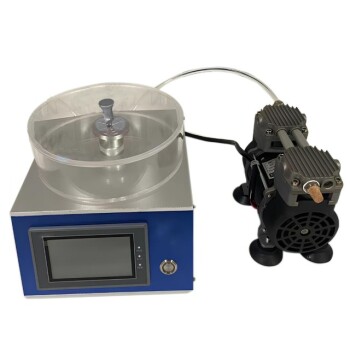Running a vacuum pump on AC power depends on several factors, including the type of pump, its duty cycle, and the application it is being used for. Generally, vacuum pumps are designed for continuous operation, but prolonged use without proper cooling or maintenance can lead to overheating and reduced lifespan. For intermittent applications, running the pump for 15-30 minutes at a time is common, while continuous-duty pumps can operate for hours or even days. Always refer to the manufacturer's guidelines for specific recommendations, and ensure the pump is properly maintained to avoid overheating or damage.
Key Points Explained:

-
Understanding Vacuum Pump Duty Cycles:
- Vacuum pumps are categorized by their duty cycles, which determine how long they can operate without overheating.
- Intermittent Duty Pumps: Designed for short-term use, typically 15-30 minutes at a time. These pumps are ideal for applications like vacuum sealing or small-scale degassing.
- Continuous Duty Pumps: Built for long-term operation, often running for hours or even days. These are used in industrial applications, such as vacuum furnaces or large-scale degassing systems.
- Always check the pump's specifications to determine its duty cycle and avoid exceeding recommended run times.
-
Importance of Cooling and Maintenance:
- Overheating is a common issue when running a vacuum pump for extended periods. Proper cooling mechanisms, such as air or water cooling, are essential to prevent damage.
- Regular maintenance, including oil changes (for oil-lubricated pumps) and filter replacements, ensures optimal performance and longevity.
- For continuous-duty pumps, monitor temperature and oil levels during operation to prevent overheating.
-
Application-Specific Run Times:
- The required run time depends on the application. For example:
- Vacuum Sealing: Typically requires short bursts of 5-15 minutes.
- Degassing: May require longer run times, ranging from 30 minutes to several hours.
- Industrial Processes: Often demand continuous operation for days or weeks.
- Adjust run times based on the specific needs of your application while staying within the pump's operational limits.
- The required run time depends on the application. For example:
-
Manufacturer Guidelines:
- Always consult the manufacturer's manual for specific run-time recommendations. Each pump model is designed with unique operational limits.
- Some manufacturers provide charts or tables detailing maximum run times based on ambient temperature and load conditions.
-
Signs of Overheating or Overuse:
- If the pump becomes excessively hot, emits unusual noises, or shows a drop in performance, it may be overheating or overused.
- In such cases, shut down the pump immediately and allow it to cool before resuming operation.
-
Energy Efficiency and Cost Considerations:
- Running a vacuum pump for longer than necessary can increase energy costs and wear on the pump.
- Use timers or automated controls to optimize run times and reduce energy consumption.
By understanding these key points, you can determine the appropriate run time for your vacuum pump on AC power, ensuring efficient operation and extending the pump's lifespan.
Summary Table:
| Factor | Details |
|---|---|
| Duty Cycle | Intermittent: 15-30 mins; Continuous: Hours to days |
| Cooling & Maintenance | Air/water cooling, oil changes, and filter replacements are essential |
| Application Run Times | Vacuum sealing: 5-15 mins; Degassing: 30 mins to hours; Industrial: Days |
| Manufacturer Guidelines | Always consult the manual for specific run-time recommendations |
| Signs of Overheating | Excessive heat, unusual noises, or performance drops |
| Energy Efficiency | Use timers or automated controls to optimize run times and reduce costs |
Need help choosing the right vacuum pump or optimizing its operation? Contact our experts today!









